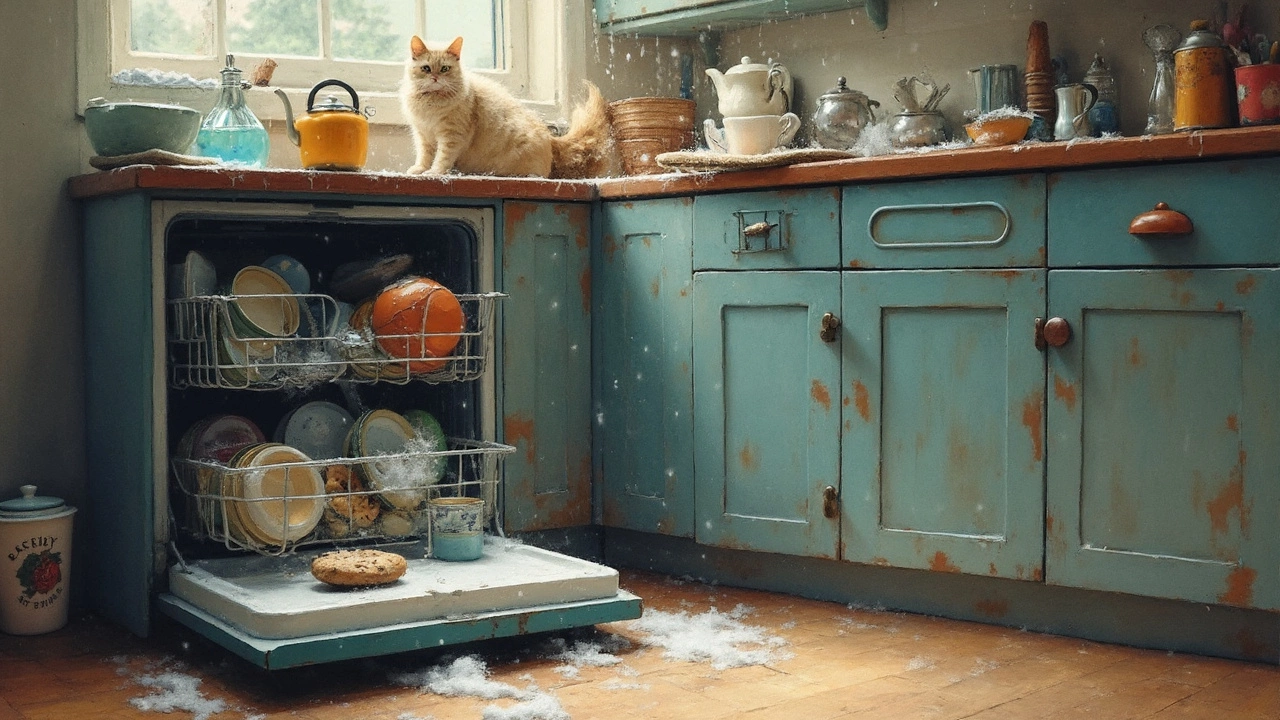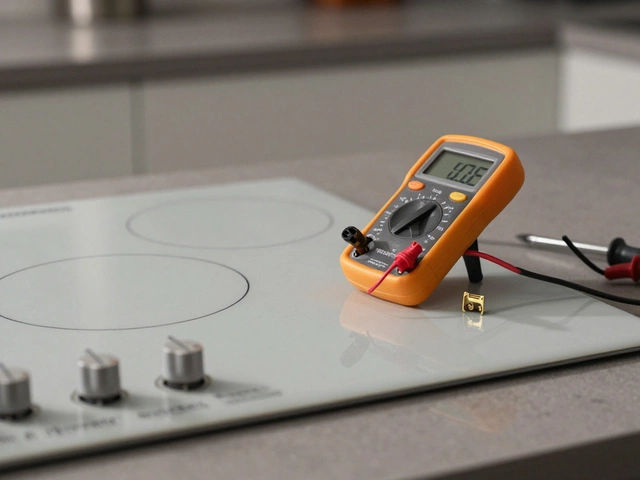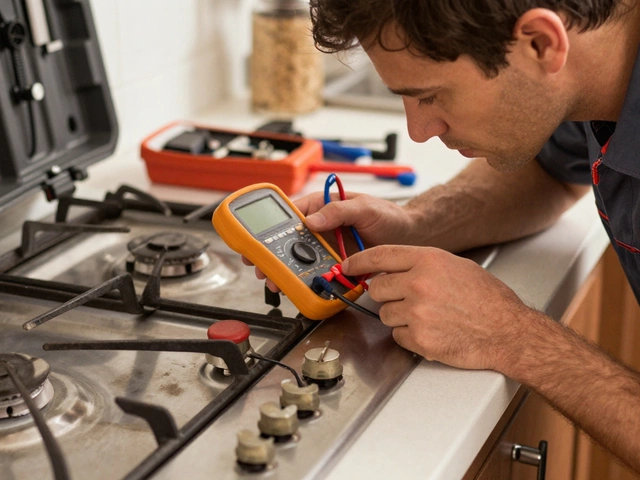Picture this: your fridge is humming quietly in the kitchen, keeping your leftovers safe, while your coffee maker preps your morning jolt—all before you stumble out of bed. These everyday devices pretty much run our schedules, but have you ever stopped to ask what actually qualifies as an appliance? The word gets tossed around a lot, but it’s not always so obvious. Some people think air fryers are just fancy gadgets, while others debate if a water heater really counts as a home appliance. And why do we often forget about the quiet heroes, like extractor fans? Here’s where things get interesting. Whether you’re shopping for a new dishwasher, comparing ovens, or just want to impress your friends at trivia night, knowing exactly what an appliance is (and isn’t) can help you make smarter decisions at home.
Defining an Appliance: More Than Just a Gadget
Let’s get something straight. When people hear the word “appliance,” most jump to the big stuff: refrigerators, washing machines, ovens. But the real definition is a little broader. An appliance is basically any device powered by electricity (sometimes gas) that helps you do household tasks or improves comfort in your home. The key part is function. If it saves you manual effort, does a repetitive job, heats or cools, or preserves food, you’re probably looking at an appliance. This separates, say, your TV (entertainment) from your microwave (cooking aid). Some things blur the line, like heated towel rails or fancy smart speakers that double as kitchen helpers. There are two big families to remember: major (think washing machines and stoves), and small (toasters and blenders).
For instance, the International Electrotechnical Commission (IEC) has guidelines that classify household and similar electrical appliances into specific groups based on safety, voltage, and usage. In real life, you’ll mostly hear “large appliance” when someone talks about something requiring a hefty installation—like a dishwasher or a range—while “small appliance” covers countertop helpers you can stash away. Appliances have come a long way since folks cranked butter churns or scrubbed laundry by hand. Now, nearly every home in developed countries has at least ten, according to a 2024 Statista survey. In the U.S., an average household is running 14 electrical appliances every day. That number seems small until you list them out: refrigerator, freezer, washing machine, tumble dryer, dishwasher, oven, hob, microwave, extractor fan, toaster, kettle, coffee maker, food processor, air purifier. Suddenly the kitchen counter looks like a robot parade.
Concrete Examples of Appliances in the Home
Let’s get specific. The classic example, of course, is the refrigerator. Ever since Frederick McKinley Jones patented the first practical automatic refrigerator in 1930, this appliance has been ground zero for kitchen innovation. It chills, preserves food, often comes with a freezer or water dispenser, and, as modern fridges now brag, can even sync with your smartphone. Then there’s the oven. Originally fueled by wood and fire, now they’re all about electric elements, convection fans, and precise digital controls. Ovens handle everything from bread baking to pizza reheating, making them an indispensable appliance in any kitchen worth its salt.
Think about the washing machine. Before automatic washers, people used washboards and manual wringers—hard work that could take literal hours. Now, even budget machines boast advanced wash cycles, steam settings, and smart diagnostics. Mattress stains? Muddy football kit? Toss it in, and your only job is choosing the right program. Then there’s the dishwasher, a marvel of modern time management. The Association of Home Appliance Manufacturers (AHAM) claims the average dishwasher uses about 3-5 gallons per load, while handwashing the same can gulp three times more water. Pretty sweet deal when you imagine a busy weeknight.
But don’t forget the small stuff: kettles, blenders, toasters, rice cookers, deep fryers, or even electric toothbrushes. Some people might laugh at calling an electric shaver an appliance, but it fits the definition if it makes daily routines a breeze. And since 2023, smart home tech has blurred these lines even more. Smart plugs, for example, turn ‘dumb’ kettles and lamps into programmable appliances. Coffee makers that remember your order and start brewing before your alarm goes off? Now that’s convenience.
| Appliance | Main Function | Typical Power Source | Estimated Average Lifespan |
|---|---|---|---|
| Refrigerator | Chills and preserves food | Electricity | 10-15 years |
| Washing Machine | Cleans clothes | Electricity; water | 10 years |
| Oven | Cooks food with heat | Electricity or gas | 13-15 years |
| Dishwasher | Washes dishes automatically | Electricity; water | 9-12 years |
| Microwave | Heats/cooks food quickly | Electricity | 7-10 years |
| Extractor Fan | Ventilates spaces, removes odors | Electricity | 10 years |
| Kettle | Boils water | Electricity | 3-5 years |
| Blender | Purees, chops, and blends ingredients | Electricity | 5-8 years |

What Makes an Appliance Useful? Features That Matter
What really sets apart a home appliance from shiny clutter? First up: convenience. When you upgrade from instant coffee to a bean-to-cup coffee machine, you don’t just up your caffeine game—you save time every morning. Energy efficiency is huge too. Modern appliances tend to sport energy rating labels. Look for ones marked A++ or higher: they’ll slice your bills and help the planet. The UK’s updated 2024 Energy Labelling Regulation made it easier to compare real-life energy use—no more hunting for hidden wattage numbers.
Reliability counts for almost everything. How often do you want to argue with a washing machine refusing to drain, or a microwave that randomly shuts off? According to Consumer Reports, the top reason people replace major appliances now isn’t even breakdown—it’s noise. If your fridge sounds like a freight train, time for an upgrade. Smart features have taken appliances into a new era. Ovens with WiFi connectivity let you preheat from your phone. Washing machines auto-order detergent when you’re running low. You can even track a faulty dishwasher from halfway across the world, then book a repair instantly. Lifehacks? Some folks use air fryers for basically everything, from “grilling” salmon to reheating pizza—less mess, better taste. Ditto for induction cooktops: they’re fast, safe, and use up to 30% less energy than old-school gas.
Don’t forget about maintenance. A well-maintained appliance can last years past its warranty. Regularly cleaning refrigerator coils, checking seals for leaks, or descaling your kettle can be huge. And hey, if you’re worried about breakdowns, look for models with good after-care support. Some companies (like Bosch or Whirlpool) now bundle remote diagnostics as standard, so issues can be spotted way before they grow into something pricey.
- Set reminders for routine cleanings—smartphones make this simple
- Check water filters and hoses every 6 months
- Descale kettles and coffee makers every few weeks if you’ve got hard water
- Keep instruction manuals handy or scan the QR code for online documentation
Choosing and Using Appliances: Tips for Savvy Homeowners
Thinking of buying a new appliance? Don’t just chase deals—think about what gets the job done. First ask yourself: what do you need most? If you batch-cook meals, a large-capacity freezer trumps a fancier blender. Love baking? Ovens with convection and precise temperature control will change your life. For small spaces, look for slimline or stackable versions of big beasts—like combo washer-dryers. Take measurements before you shop. It sounds basic, but you’d be amazed how many folks buy a fridge that doesn’t fit through the door. Energy consumption should be front of mind too, especially when utility costs keep creeping up. An A+++ rated appliance may cost a bit more upfront, but the savings in power bills pay for that difference over its lifespan.
Safety’s a big deal. Don’t ignore recalls or strange noises—if you smell burning, unplug and call a professional. For used appliances, double-check labels for compliance with local safety standards. Want to get the most out of your appliance? Dive into the manual. Most folks only scratch the surface of what their device can do. Explore functions like delayed start for washing machines or rapid heat for ovens. There’s no shame in posting questions on forums or asking neighbors for tips. You’ll pick up tricks no manual covers—like using the oven’s broiler to crisp leftovers or flipping the extractor fan to push cool air in summer.
- Set an appliance budget and stick to it, but don’t skimp on essential features
- Consider future compatibility—some smart devices only work within certain ecosystems (like Alexa or Google Home)
- Register your appliance for warranty and software updates
- Join online owner groups for troubleshooting and hacks
- Dispose of broken appliances responsibly, using certified e-waste drop-offs
So next time you flick a switch and something whirs to life, think about the decades of engineering, convenience, and daily comforts humming along in the background. Appliances, big and small, add up to a lot more than just “stuff”—they’re the backbone of modern living. Even that humble toaster deserves some respect.




